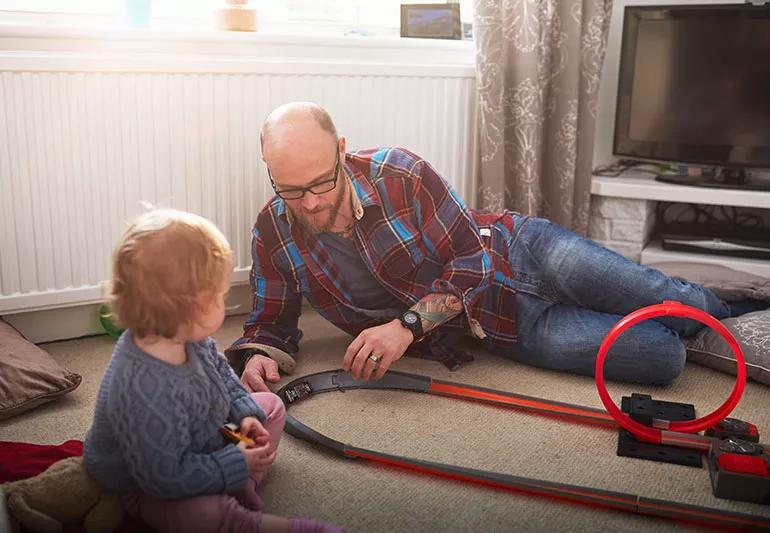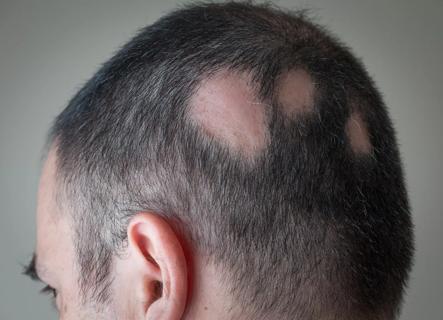What to know about PRP treatment for androgenic alopecia

Are you looking for a hair loss solution? A therapy that promotes healing in injured joints may help restore your lost hair.
Advertisement
Cleveland Clinic is a non-profit academic medical center. Advertising on our site helps support our mission. We do not endorse non-Cleveland Clinic products or services. Policy
About 50 million American men and 30 million women have male- or female-pattern baldness. It can begin early in life, but is much more common after the age of 50, when more than 50% of men will experience some kind of hair loss.
However, an emerging treatment — platelet-rich plasma (PRP) therapy — appears to help regrow lost hair. And, there are virtually no side effects from PRP, except for a mild feeling of pressure at the injection site, says dermatologist Shilpi Khetarpal, MD.
Physicians began using PRP therapy about a decade ago to speed up the healing process in damaged joints after injury or surgery.
During the treatment, a technician draws your blood and spins it in a centrifuge to separate out the platelets and plasma. Doctors then inject the plasma, which helps repair blood vessels, promote cell growth and wound healing, and stimulate collagen production.
Doctors began using PRP in dermatology after researchers found that high concentrations of platelets in plasma cells help promote hair growth by prolonging the growing phase of the hair cycle.
Doctors inject plasma into the scalp where hair loss has occurred. They typically administer injections monthly for three months, then spread them out over about three or four months for up to two years. The injection schedule will depend on your genetics, pattern and amount of hair loss, age and hormones.
Advertisement
Because the treatment is cosmetic, insurance does not cover the procedure, Dr. Khetarpal says. The cost ranges between $500 and $1,000 per injection session.
Other treatments for hair loss currently on the market are often more problematic for many patients, Dr. Khetarpal says.
There are two FDA-approved medications for treating hair loss: finasteride and minoxidil. But you must take these drugs consistently over time and results are inconsistent, she says.
Each drug also sometimes has side effects:
Hair transplantation is another option, but it requires cuts in the scalp and recovery time is longer, she says.
Because it is a surgical procedure, doctors typically recommend hair transplantation only for those who have dramatic hair loss. A transplant is also more costly and leaves scars. Doctors can perform PRP therapy prior to transplantation, which can provide better results with more dense hair growth, Dr. Khetarpal says.
Recent research bears out the potential of PRP therapy.
In a 2014 study, researchers in India looked at men with male-pattern baldness who used both approved medications, but saw little change in their hair growth.
After four PRP treatments, they had about 30% more growth in thinning areas.
A 2017 study out of Italy also found male patients had increased hair and density in areas where doctors used PRP therapy.
Dr. Khetarpal says it takes about three months to see an improvement. After that time, most of her patients – both male and female – have regrown 30% to 40% of the hair they’ve lost.
Part of the success of PRP comes from selecting the right patients for therapy, Dr. Khetarpal says. PRP is safe and effective for many people. However, you should not have PRP therapy if you fall into either of these groups:
PRP therapy works better if your hair loss is recent. It is more challenging to “wake up” hair follicles that have been dormant for a long time, Dr. Khetarpal says.
“I tell people I can get your hair back to what it was five years ago,” she says. “If your hair loss is older, you may see some recovery, but it’s likely not worth your investment of time and money.”
Advertisement
Learn more about our editorial process.
Advertisement

Take steps to reduce stress by practicing meditation, finding time to relax and maintaining a healthy lifestyle

You may see pitting, brittleness or ridges in your fingernails and toenails

Your immune system may attack hair follicles anywhere on your body

It’s normal to lose around 50 to 150 strands per day to routine hair shedding

Studies are mixed, but frequently wearing very tight, warm hats could stress your follicles and lead to hair loss

Things like stress, heated styling and other health conditions may cause you to lose more hair than normal

Creatine does cause some side effects, but hair loss probably isn’t one of them

A gentle hair care routine, stress reduction and sun protection can help reduce flares and maintain your locks

The best parenting style balances enforcing rules and showing plenty of love

Tips include cutting back on sugar, focusing on exercise and managing stress

It can be harder to let go when you’ve invested time, energy and emotions — but it might be the healthier choice long term